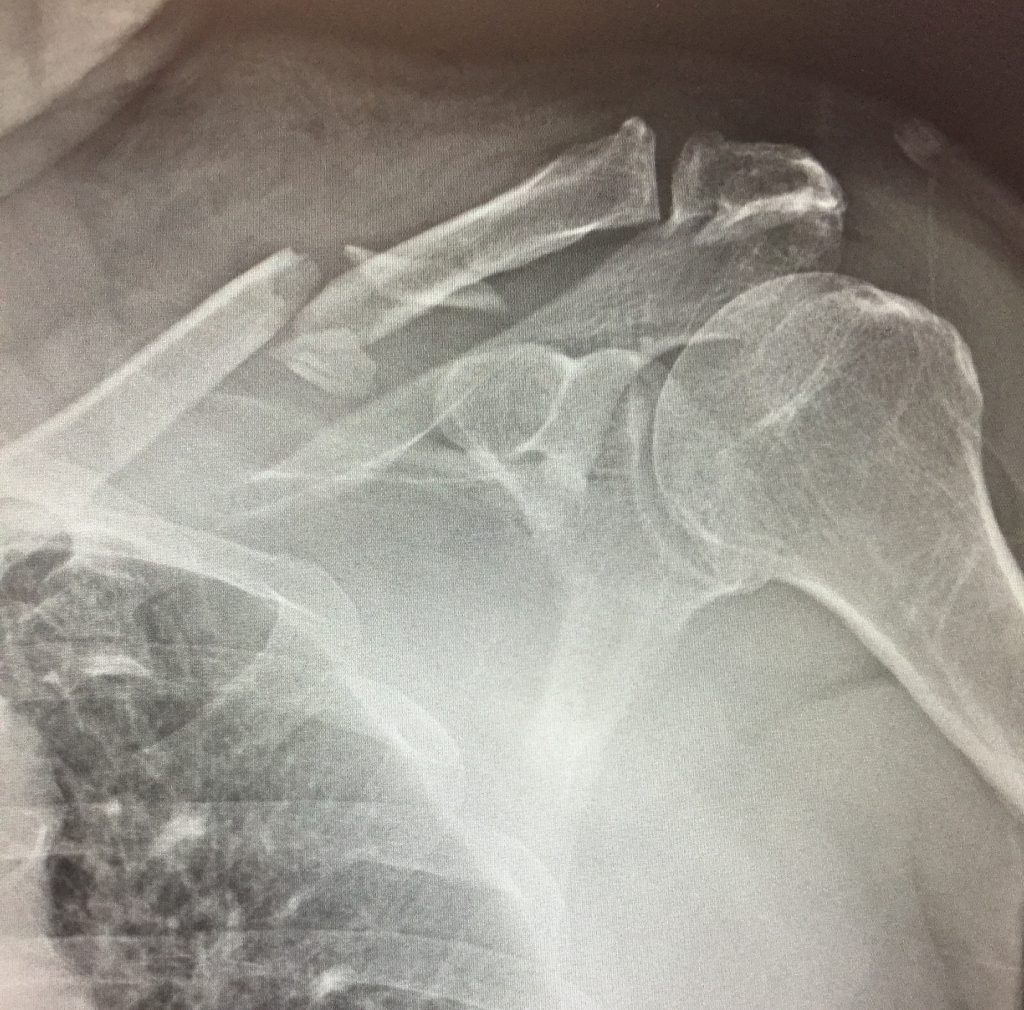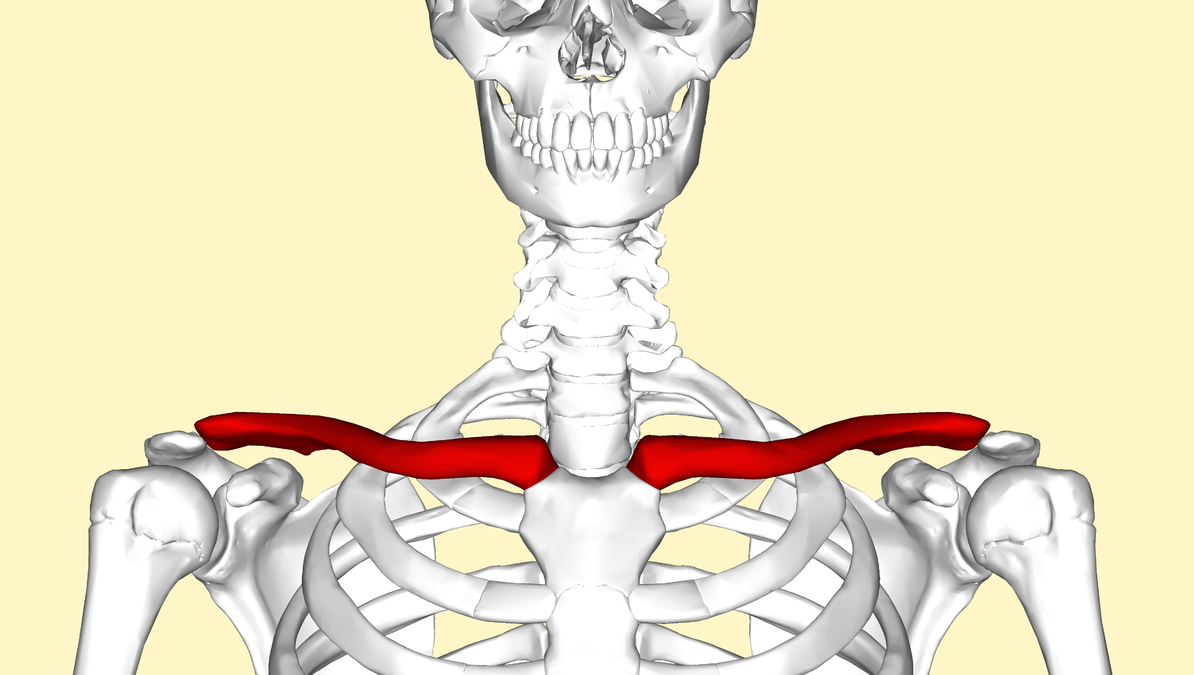A young healthy person takes a fall and presents to the ED with left-sided shoulder pain. Here is the x-ray:

Obviously this is a comminuted clavicle fracture. The question is: does this patient need urgent referral to an orthopedic surgeon for repair or is a splint and discharge home adequate?
Which clavicle fractures warrant operative repair?
First, some background: most fractures involve the middle 1/3rd of the clavicle.
The clavicle is actually the most frequently fractured bone in infants. Beyond that age group, most cases occur after a fall on an outstretched arm.
Associated injuries are rare but you should consider scapular fractures, rib fractures, pneumothorax, and neurovascular injury.
In general, fractures are treated non-operatively and best managed with sling immobilization and gentle range of motion exercises at 2-4 weeks. There are certain high-risk factors which warrant orthopedic referral and consideration of operative repair. Failing to recognize this group of patients risks non-union, poor cosmesis, and decreased shoulder strength.
Indications for operative repair:
- Open fracture
- Skin tenting
- Subclavian artery or vein injury
- Symptomatic non-union or mal-union
- Consider if there is displacement with > 2cm shortening
- Consider if there are bilateral displaced clavicle fractures
← Skin tenting
This patient happened to present during the daytime hours so orthopedics was consulted from the ED. They actually admitted the patient for operative intervention because of skin tenting and concern for skin breakdown and conversion to an open fracture. He was taken to the OR the next day for open reduction and internal fixation.








